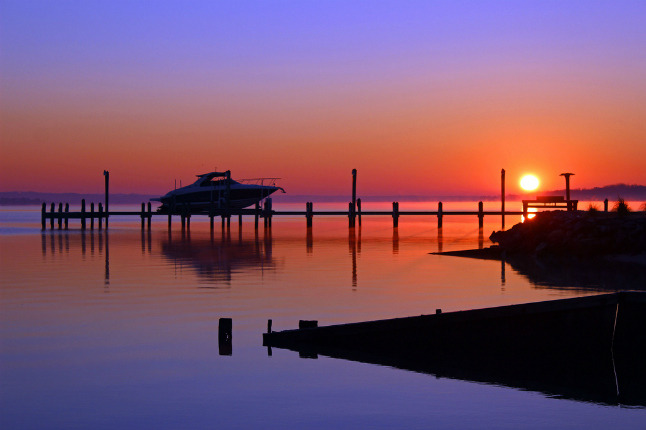Lifesaving Advice: The Dos And Don'ts Of Cold Water Boating
Winter and early spring may be characterized by snow storms and plummeting temperatures, but that doesn't mean we should be spending months on end indoors. Outdoor recreation can be even more enjoyable during these chilly months when the crowds are sparse and water hovers around freezing.
While winter may be a great time to get out on the water, it can be dangerous without the right preparation. Executive Director of the National Safe Boating Council Rachel Johnson recalls a recent story where a simple life jacket made all the difference.
When 51-year-old John Stravalle of Newburgh, NY headed out to go fishing on an early evening in January in Lackawaxen, PA, he never thought he'd find himself fighting for his life in 33-degree water. After attempting to retrieve his anchor he fell overboard from his canoe, and began the difficult task of swimming to shore in the frigid Delaware River. Once on shore, he was helped by a local homeowner. Thankfully, before Stravalle launched his canoe that day, he read a sign on the access bulletin board that stated: Mandatory Wear of the Life Jacket Nov. 1st – April 30th. He was wearing his life jacket. "This sign saved my life," said Stravalle.
Stravalle was lucky, but all too often people venture out on the water without a life vest or a back-up plan. If they fall in, according to the Cold Water Boot Camp USA series, they have one minute to adjust to the shock of being in the cold water, 10 minutes of meaningful movement to get help and get out of the water, and one hour before they become unconscious from hypothermia.
Wearing a life vest (and ensuring everyone else is wearing one too) is the simplest lifesaving strategy for staying safe on the water, Johnson said. That's the focus of The North American Safe Boating Campaign, known as Wear It!
While life vests should be the first priority, there are other things you can do to stay safe. Here are some tips from Johnson and the National Safe Boating Council to keep in mind before you go cold weather boating this winter and early spring.
· Do make sure everyone is wearing a life jacket. Even experienced swimmers can experience shock within one minute in the frigid water and may lose muscle control within 10 minutes.
· Do file a float plan with someone you trust that includes details about the trip, boat, passengers, towing or trailer vehicle, communication equipment, and emergency contacts. Download a free float plan template at FloatPlanCentral.org.
· Do dress properly for the weather, always wearing layers, and bring an extra set of clothes in case you get wet. Remember, dress for the water temperature, not the air temperature.
· Do catch your breath. A sudden unexpected fall into cold water causes an involuntary gasp (or torso) reflex. It takes less than ½ cup of water in your lungs to drown. If you remain calm, you have a greater chance of self-rescue.
· Do look for ways to increase your buoyancy. If you're in the water with others, huddle together with everyone facing inwards to help everyone stay afloat and keep warm.
· Don't panic if you fall into the water. Stay afloat with the help of your life jacket, regain control of your breathing, and keep your head above water in vision of rescuers. Stay with the boat if possible.
· Don't apply heat to extremities like arms and legs of a rescued victim. This sudden change in temperature may cause cardiac arrest.
"Recreational water activities during the winter and early spring are a lot of fun, but always remember safety first," Johnson said. "And, like John Stravalle, you never know when wearing your life jacket will save your life. Always Wear It!"
–
Rachel Johnson is executive director of the National Safe Boating Council, the lead organization for the North American Safe Boating Campaign.The yearlong campaign, simply known as Wear It!, promotes safe and responsible boating and the value of voluntary life jacket wear by recreational boaters. For more, follow on the campaign on Twitter, Facebook or on their website.
